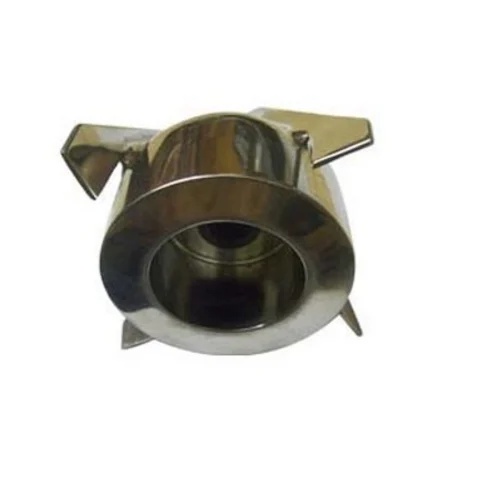In the realm of scientific research, precision and efficiency are paramount. This is where magnetic stirrers come into play, revolutionizing the process of mixing substances and solutions. As a Magnetic Stirrer exporter, understanding the intricacies of these devices is essential to cater to the needs of laboratories and industries worldwide.
Table of Contents
- Introduction
- The Basics of Magnetic Stirrers
- Understanding Magnetic Stirrers
- Components of a Magnetic Stirrer
- How Magnetic Stirrers Work
- Principle of Magnetic Induction
- Generating Rotational Motion
- Achieving Homogeneous Mixing
- Applications in Various Fields
- Pharmaceutical Industry
- Chemistry Laboratories
- Food and Beverage Industry
- Advantages of Magnetic Stirrers
- Precise Control
- Contamination Avoidance
- Time and Labor Efficiency
- Factors Influencing Stirring Efficiency
- Viscosity of the Solution
- Stir Bar Shape and Size
- Stirring Speed
- Choosing the Right Magnetic Stirrer
- Matching Capacity to Needs
- Additional Features
- Maintenance and Safety
- Cleaning and Care
- Safety Precautions
- Emerging Trends in Magnetic Stirrers
- Automation and Digitalization
- Enhanced Mixing Techniques
- Future Potential and Innovations
- Nanotechnology Integration
- Green and Sustainable Stirring
- Conclusion
- FAQs
- Q1: Are magnetic stirrers suitable for high-viscosity solutions?
- Q2: Can I use any container with a magnetic stirrer?
- Q3: Do magnetic stirrers produce heat during operation?
- Q4: What is the average lifespan of a magnetic stirrer?
- Q5: Can I adjust the speed of stirring?
Introduction
Magnetic stirrers, also known as magnetic hotplate stirrers or magnetic agitators, are indispensable tools in laboratories, research facilities, and industries. They offer a hands-free and efficient solution to the age-old practice of manual stirring, enabling scientists, chemists, and researchers to focus on other crucial aspects of their work.
The Basics of Magnetic Stirrers
Understanding Magnetic Stirrers
A magnetic stirrer consists of two main components: a stir plate and a stir bar. The stir plate contains a magnetic coil powered by electricity, while the stir bar is a small, cylindrical magnet that is placed within the solution to be stirred.
Components of a Magnetic Stirrer
- Stir Plate: The flat surface where the container is placed for stirring.
- Stir Bar: The magnetic piece that spins to create the stirring motion.
- Control Panel: Allows users to set the stirring speed and monitor the process.
- Heating Element (Optional): Found in some models for temperature-sensitive reactions.
How Magnetic Stirrers Work
Principle of Magnetic Induction
Magnetic stirrers operate based on the principle of magnetic induction. When the stir plate is turned on, an alternating magnetic field is generated by the magnetic coil. This field interacts with the magnetic properties of the stir bar, causing it to rotate.
Generating Rotational Motion
As the magnetic field changes direction, the stir bar follows suit, producing a smooth and consistent rotational motion. This motion transfers to the surrounding liquid, effectively mixing the solution.
Achieving Homogeneous Mixing
The continuous rotation of the stir bar ensures that all particles within the solution are evenly distributed. This is particularly important in reactions where consistency is vital.
Applications in Various Fields
Magnetic stirrers find applications in a wide range of fields, including:
Pharmaceutical Industry
In drug development, magnetic stirrers are used to mix various compounds, ensuring accurate and reproducible results.
Chemistry Laboratories
Chemists utilize magnetic stirrers to conduct experiments, dissolve solutes, and maintain uniform temperatures during reactions.
Food and Beverage Industry
From flavor blending to quality control, magnetic stirrers play a role in maintaining consistent textures and flavors in the food industry.
Advantages of Magnetic Stirrers
Precise Control
Magnetic stirrers allow for precise control over stirring speed and direction, leading to better reproducibility of experiments.
Contamination Avoidance
Since the stir bar is the only component in contact with the solution, the risk of contamination is significantly reduced.
Time and Labor Efficiency
Researchers can multitask while the stirrer operates, saving time and reducing the need for constant manual attention.
Factors Influencing Stirring Efficiency
Viscosity of the Solution
Highly viscous solutions may require stronger magnetic fields or larger stir bars for effective mixing.
Stir Bar Shape and Size
Choosing the right stir bar shape and size ensures optimal interaction with the magnetic field.
Stirring Speed
The speed at which the stir bar rotates affects the intensity of mixing. Different reactions may demand different speeds.
Choosing the Right Magnetic Stirrer
Matching Capacity to Needs
Selecting a stirrer with an appropriate capacity ensures efficient mixing without overloading or underutilizing the device.
Additional Features
Advanced stirrers come with features like digital controls, programmable routines, and even integrated heating.
Maintenance and Safety
Cleaning and Care
Regular cleaning of the stir plate and stir bar prevents contamination and extends the life of the equipment.
Safety Precautions
Users should be cautious around the magnetic field and follow guidelines to prevent accidents and injuries.
Emerging Trends in Magnetic Stirrers
Automation and Digitalization
Modern magnetic stirrers are incorporating automation, allowing researchers to control and monitor the process remotely.
Enhanced Mixing Techniques
Researchers are exploring innovative ways to enhance mixing efficiency, leading to faster reactions and higher yields.
Future Potential and Innovations
Nanotechnology Integration
The integration of nanotechnology could lead to stirrers capable of manipulating and mixing at the nanoscale.
Green and Sustainable Stirring
Efforts are being made to reduce energy consumption and make stirring processes more environmentally friendly.
Conclusion
Magnetic stirrers have undoubtedly transformed laboratories and industries by simplifying and improving the mixing process. Their ability to ensure uniform mixing, coupled with precise control and time efficiency, makes them invaluable tools for a wide range of applications.
FAQs
Q1: Are magnetic stirrers suitable for high-viscosity solutions?
Yes, magnetic stirrers can be used for high-viscosity solutions, but the choice of stir bar and magnetic field strength is crucial for effective mixing.
Q2: Can I use any container with a magnetic stirrer?
Most containers made of materials like glass, plastic, or ceramic can be used. However, it's essential to ensure the container is compatible with magnetic fields.
Q3: Do magnetic stirrers produce heat during operation?
Yes, prolonged operation can generate heat. Some advanced models come with built-in heating elements for temperature control.
Q4: What is the average lifespan of a magnetic stirrer?
With proper care and maintenance, a magnetic stirrer can last for several years, even in demanding laboratory environments.
Q5: Can I adjust the speed of stirring?
Absolutely, most magnetic stirrers allow users to adjust the stirring speed to suit the specific requirements of their experiments.


No comments yet